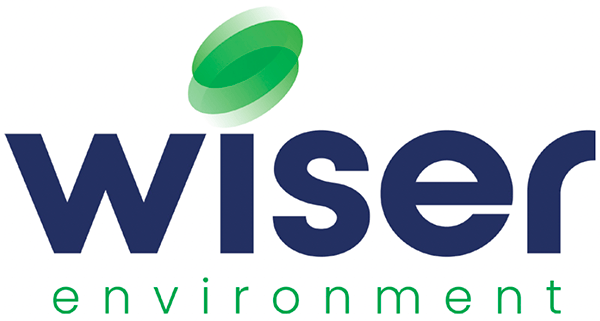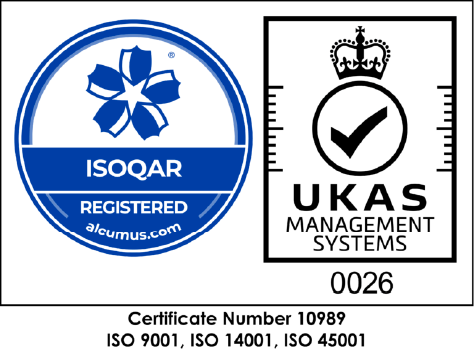Fire prevention plans are currently a hot topic (no pun intended!) in the waste industry but do you really know what the fuss is about, what is a fire prevention plan and why they are important? Wiser Environment takes a look at fire prevention plans and explains this challenging requirement in layman’s terms.
What is a fire prevention plan?
A fire prevention plan (FPP) is a standalone management system that details the prevention measures and procedures as well as mitigation methods in place to protect against fire whilst carrying out day to day operations on a site.
Your fire prevention plan identifies the possible causes of fire at your site and sets out your measures to address those fire risks. These measures will depend on your onsite activities and will take in to account waste management activities as well as any other onsite activities that could be a fire risk.
The Government website states that the aim of an FPP (in relation to an environmental permit) is designed to meet these three objectives:
- Minimise the likelihood of a fire happening
- Aim for a fire to be extinguished within four hours
- Minimise the spread of fire within the site and to neighbouring sites
Why would I need a fire prevention plan?
 We would recommend that any operator storing any amount of combustible waste has a fire prevention plan to protect their business but there is also a regulatory requirement.
We would recommend that any operator storing any amount of combustible waste has a fire prevention plan to protect their business but there is also a regulatory requirement.
The Environment Agency (EA) requires fire prevention plans to be submitted with all permit variations and new permit applications (at application stage) for sites that store combustible waste. The FPP needs to be approved by the EA before a permit is granted.
The Environment Agency can also request that Standard Rules Permit Holders submit FPPs following a fire or any sites they deem to be high risk. The risk assessment is carried out by the EA which is targeting poor performers and high public interest sites as a priority. During 2018, the EA is expected to go further and require all environmental permit holders who store and process combustible waste to submit an FPP.
What constitutes combustible waste?
Combustible waste, materials that catch fire and burn easily, includes (but not exclusively):
- Paper and cardboard
- Plastics
- Rags and textiles
- Scrap metals contaminated or mixed with other waste such as oils or plastics
- De-polluted and un-depolluted end of life vehicles (ELVs)
- Refuse derived fuel (RDF) and solid recovered fuel (SRF)
- Compost and plant material
- Biomass
- Mixed waste containing any combustible wastes
- Rubber
- Wood
- Fragmentiser waste/ residue
- Waste electrical and electronic equipment (WEEE)
What happens if I don’t have a fire prevention plan?
If you do not have an approved fire prevention plan during the permitting process, the Environment Agency can refuse to issue your environmental permit.
Existing sites that do not have an FPP will be requested to submit one by the Environment Agency. Failure to produce an approved FPP will result in enforcement action by the Environment Agency.
With a high rate of fires at waste facilities over recent years, higher risk sites may also struggle to obtain adequate insurance cover and incur higher premiums if they do not have and implement an approved fire prevention plan.
What needs to be in a fire prevention plan?
A fire prevention plan needs to look at all aspect of your operations including your activities and infrastructure, waste and storage methods, waste management processes, and fire processes and procedures. The Environment Agency recommends you include:
- The activities you carry out
- Site layout, separation distances and quarantine area
- Infrastructure for example fire walls, bays
- Total amount of waste stored on site (by waste type)
- Storage locations for each type of waste
- Maximum time each type of waste will be stored on site
- Maximum volume of each waste pile
- Methods for storing each waste type
- Waste management techniques
- Fire detection methods (automated systems)
- Firefighting techniques
- Water supplies
- Management of fire waters
- Contingency plans for during and after a fire
The EA allows companies to propose ‘alternative measures’ for fire prevention and mitigation at site. These will be assessed against the requirement to reduce the fire risk of the activities to an appropriate level, and to meet the three objectives outlined above (in ‘what is a fire prevention plan?’).
How do I start to produce a fire prevention plan?

- Detail your onsite operations and activities and anything else that could cause a fire risk
- Identify how you would prevent a fire occurring on site through your management of waste storage, processing techniques and any further infrastructure in place or planned
- Ensure there is the ability for the Fire and Rescue Service to actively fight a fire on site – this includes access to waste/burning material, adequate water supply for quantities of waste on site and the ability to contain the firefighting water on site
The FPP is a fluid document that should evolve with site operations so that it remains current and effective.
To ensure that your fire prevention plan protects your business and is approved by the Environment Agency without unnecessary delay, it is likely that you will require the assistance of a specialist with knowledge of both fire prevention plans and environmental compliance.
What else do I need to know about fire prevention plans?
As with most aspects of safety and security, your staff can either be the first line of defence or the weakest link in preventing, or minimising the impact of, a fire. Every member of your team on site, including contractors and agency staff, needs to be made aware of, and trained in, the risks of a fire at your site. Everyone needs to understand their role in preventing a fire occurring and during a fire if one breaks out.
Communications should include a variety of methods such as induction and on-the-job training, posters around site, hand-outs, toolbox talks and refresher training.
Find out more
You can find out more about Wiser Environment’s fire prevention plan expertise here.
Further advice on FPPs is provided by both the Environment Agency and WISH:
- Environment Agency: Fire prevention plans: environmental permits
- WISH: Reducing risk at waste management sites
To speak to an expert in fire prevention plans and environmental compliance, contact Wiser Environment on 01480 462 232

